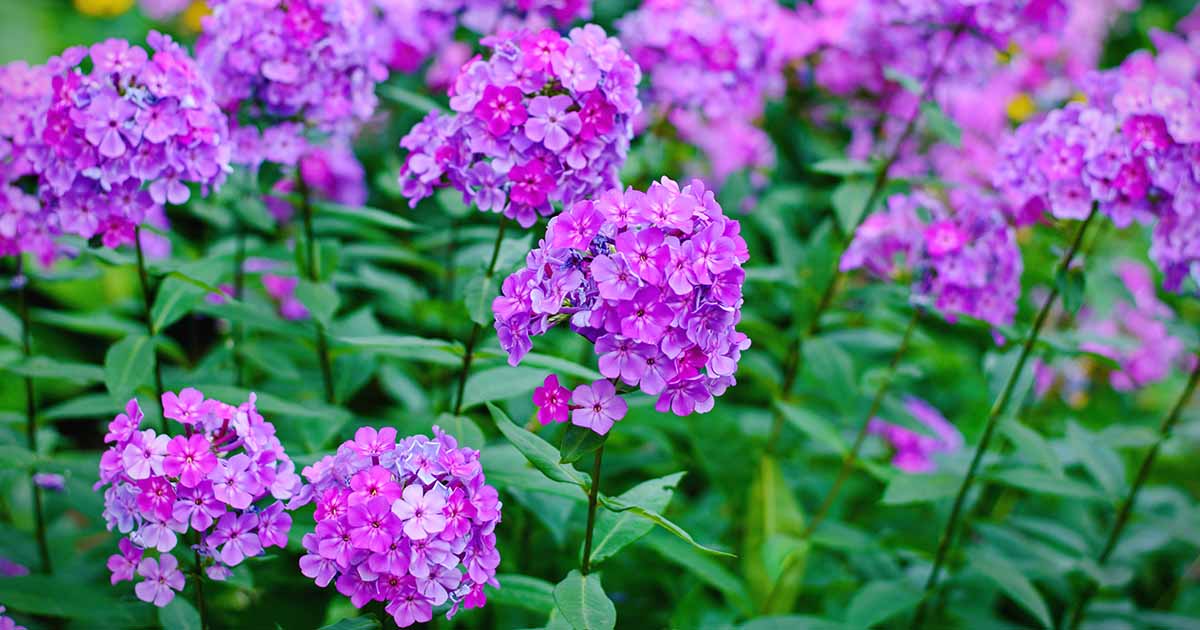
Phlox, also known as “the star of the garden,” is a beautiful and versatile flowering plant that captivates garden enthusiasts around the world. With its vibrant colors, delicate petals, and enchanting fragrance, phlox has earned a well-deserved spot in gardens, parks, and landscapes.
But beyond its aesthetic appeal, phlox holds a treasure trove of fascinating facts that will leave you awestruck. From its diverse species to its historical significance, phlox continues to amaze us with its unique characteristics.
In this article, we will uncover 16 unbelievable facts about phlox that will deepen your appreciation for this remarkable plant. So, let’s embark on a journey through the intriguing world of phlox and discover the secrets behind its captivating allure.
Key Takeaways:
- Phlox is a colorful, easy-to-grow plant native to North America, attracting pollinators and symbolizing sweet dreams and harmony. It’s perfect for gardens and bouquets, and even has medicinal properties!
- With a variety of species and heights, phlox can be used as ground cover, in containers, or as a deer-resistant option. Its delightful fragrance and vibrant colors make it a favorite among gardeners.
Phlox is a colorful and versatile plant
Phlox is a perennial flowering plant that belongs to the Polemoniaceae family. It comes in a variety of vibrant colors such as pink, purple, blue, and white, making it a popular choice for gardeners and landscapers.
Phlox is native to North America
Phlox is indigenous to North America and can be found growing in various regions, including woodlands, meadows, and mountains. It has also been cultivated as a garden plant and is cherished for its beauty and fragrance.
There are different species of phlox
Phlox encompasses a wide range of species, including creeping phlox, garden phlox, and woodland phlox. Each species has its own unique characteristics and growth habits, providing options for different landscaping needs.
Phlox attracts pollinators
Phlox flowers are known to attract bees, butterflies, and hummingbirds, making them excellent additions to pollinator gardens. The nectar-rich blooms serve as a valuable food source for these beneficial creatures.
Phlox is easy to grow
Whether you are a novice or experienced gardener, phlox is a great choice as it is relatively easy to grow and maintain. It requires well-draining soil, moderate sunlight, and regular watering.
Phlox blooms in spring and summer
Phlox flowers typically bloom in the spring and summer months, adding a burst of color to gardens and landscapes during these seasons. Their lovely fragrance further enhances the overall appeal.
Phlox has medicinal properties
Phlox has been used in traditional medicine for its medicinal properties. It is believed to have therapeutic effects, including anti-inflammatory and antimicrobial properties.
Phlox is deer resistant
Deer can be a nuisance in many gardens, but they tend to avoid phlox due to its strong fragrance and bitter taste. This makes phlox a great choice for gardens located in deer-prone areas.
Phlox can be grown in containers
If you have limited space or want to add a splash of color to your patio or balcony, phlox can be grown in containers. Choose compact varieties that are suitable for container gardening.
Phlox is a symbol of sweet dreams
In Victorian flower language, phlox is associated with the sentiment of “sweet dreams.” It is believed to represent a wish for peaceful and restful sleep.
Phlox can be used as ground cover
Certain species of phlox, such as creeping phlox, make excellent ground covers. They spread quickly and form a dense mat of foliage and flowers, providing erosion control and weed suppression.
Phlox is a favorite of gardeners
Phlox is highly regarded among gardeners for its showy blooms, fragrance, and versatility. It can be used in various garden styles, including cottage gardens, formal gardens, and wildflower meadows.
Phlox flowers have a pleasant scent
The flowers of phlox emit a delightful fragrance, which adds to their appeal in gardens and floral arrangements. The sweet scent lingers in the air, attracting not only pollinators but also human admirers.
Phlox comes in different heights
Phlox varieties have varying heights, ranging from low-growing types that are ideal for borders and rock gardens to taller varieties that create stunning backdrops in flower beds and borders.
Phlox flowers are used in bouquets
The beautiful blooms of phlox are often included in floral arrangements and bouquets. They add a pop of color and a touch of elegance, whether used alone or combined with other flowers.
Phlox is a symbol of harmony
In flower symbolism, phlox symbolizes harmony and unity. It represents the coming together of different elements to create a balanced and harmonious whole.
Conclusion
In conclusion, phlox is truly a remarkable plant with a rich history and fascinating characteristics. From its vibrant blooms to its ability to attract pollinators, phlox adds beauty and diversity to any garden or landscape. Whether you’re a seasoned gardener or a beginner, phlox is a great addition to consider. With its wide range of colors, sizes, and growth habits, there’s a phlox variety for every preference and need. So, go ahead and explore the world of phlox – you won’t be disappointed!
FAQs
1. Can phlox be grown indoors?
Yes, certain varieties of phlox can be grown indoors as long as they receive ample sunlight and are planted in well-draining soil. However, it is important to note that phlox is primarily an outdoor plant and may not thrive as well indoors.
2. How often should I water my phlox?
Phlox prefers moist soil but doesn’t like to sit in standing water. It’s best to water your phlox regularly, keeping the soil consistently moist but not saturated. Aim to water deeply once a week, or more frequently during hot and dry periods.
3. When is the best time to prune phlox?
The ideal time to prune phlox is in early spring, before new growth appears. This allows for better air circulation and helps prevent disease. Simply remove any dead or damaged stems, and cut back the plant to a height of about 6 inches.
4. How can I prevent powdery mildew on my phlox?
Powdery mildew can be a common problem for phlox. To prevent it, make sure your phlox plants are properly spaced to allow for good airflow. Avoid overhead watering and instead, water at the base of the plant. If needed, apply a fungicide labeled for powdery mildew control.
5. Can phlox be divided and replanted?
Yes, phlox can be divided and replanted to create new plants. The best time to divide phlox is in early spring or after it has finished flowering in the fall. Carefully dig up the clump, separate the sections, and replant them in well-prepared soil.
6. Is phlox a good plant for attracting butterflies?
Absolutely! Phlox is known for its attractive, fragrant flowers, which are highly attractive to butterflies and other pollinators. Adding phlox to your garden can help create a butterfly-friendly habitat and bring a delightful display of fluttering visitors.These are just a few of the frequently asked questions about phlox. If you have any more specific queries about this amazing plant, consult with your local gardening experts or do further research to ensure the best care for your phlox.
Phlox enthusiasts and gardeners alike will find even more captivating information in our other articles. Explore the astounding world of garden phlox, where vibrant colors and delightful fragrances abound. Unearth additional captivating facts about this beloved flowering plant, guaranteed to inspire your green thumb. For those seeking to cultivate a stunning outdoor space, surprising facts about garden phlox await, providing valuable insights to help your garden thrive. Continue your phlox journey with these engaging reads, and let your knowledge blossom alongside your beautiful plants.
Was this page helpful?
Our commitment to delivering trustworthy and engaging content is at the heart of what we do. Each fact on our site is contributed by real users like you, bringing a wealth of diverse insights and information. To ensure the highest standards of accuracy and reliability, our dedicated editors meticulously review each submission. This process guarantees that the facts we share are not only fascinating but also credible. Trust in our commitment to quality and authenticity as you explore and learn with us.


